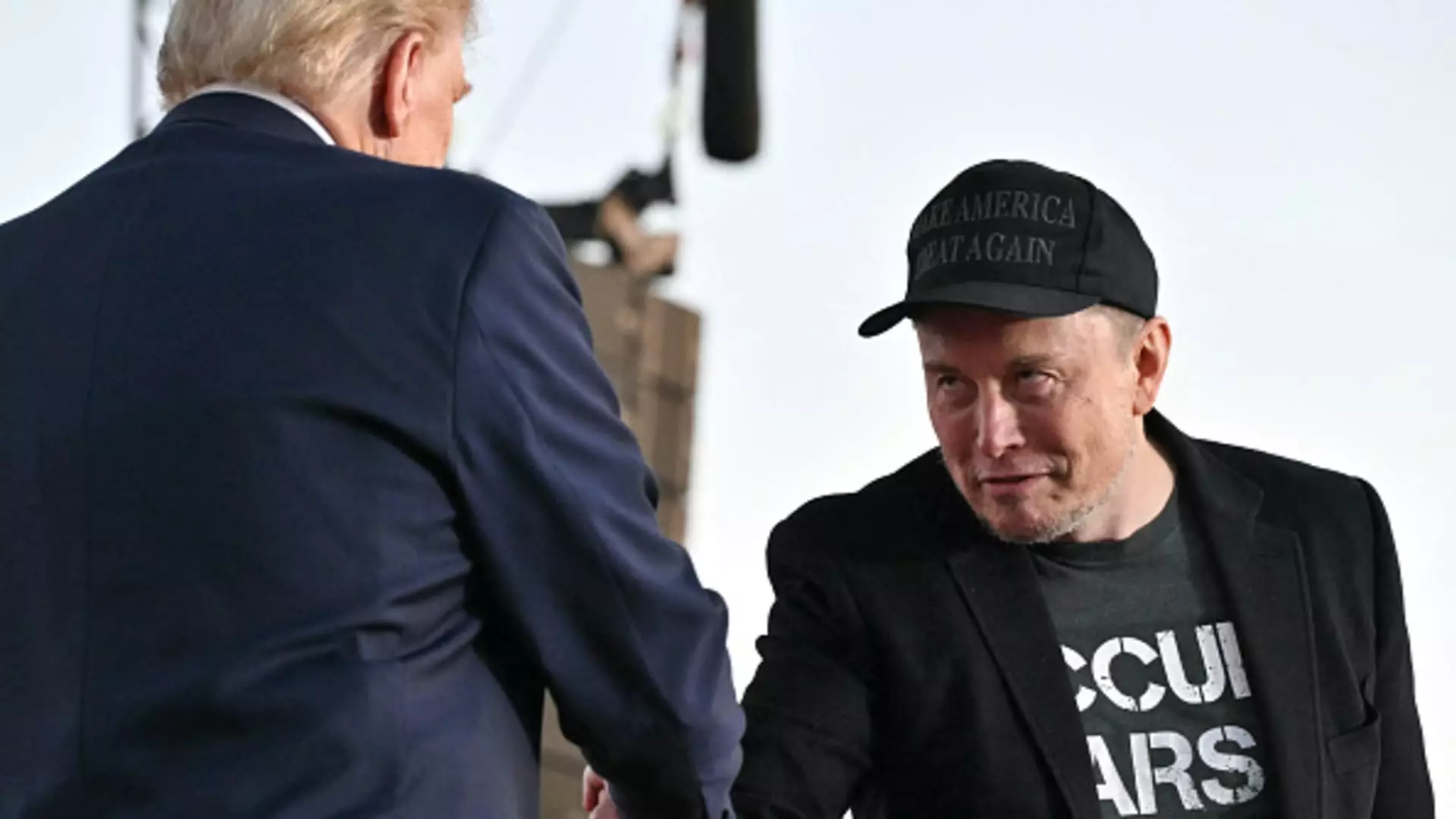Tesla has long been a front-runner in the electric vehicle market, but the company’s ambitions extend beyond traditional automobiles. With a vision of fully autonomous vehicles and a fleet of robotic taxis, Tesla’s future heavily relies on the regulatory landscape. Recently, Tesla shares surged following reports that the incoming administration under President-elect Donald Trump plans to prioritize a federal framework for regulating self-driving vehicles through the U.S. Department of Transportation. This new regulatory focus has created an environment that can either elevate or hinder Tesla’s technological aspirations.
The immediate reaction in the stock market was palpable; Tesla’s shares jumped by nearly 8% in premarket trading after the announcement. This spike suggests that investors view the accessibility of a clear regulatory framework as a significant advantage for Tesla. Given the intricacies and risks associated with self-driving technology, investors are aware that a stable regulatory environment can enhance public trust and facilitate faster deployment of agency-approved autonomous vehicles. The gap between Tesla’s ambitious promises and actual market delivery may finally be narrowing, with supportive regulations acting as a catalyst for change.
Tesla’s aim of rolling out its own version of “robotaxis” underscores its urgency in being a leader in the self-driving sector. For years, CEO Elon Musk has championed the idea of a fully autonomous fleet that requires no human driver. During a recent event, Musk revealed the Cybercab, a futuristic design devoid of traditional driving controls, reinforcing the notion that Tesla is serious about its commitment to sustainable transportation through autonomous technology. Such conceptual vehicles could revolutionize urban mobility, and regulation will play a crucial role in determining their viability in real-world applications.
Despite Tesla’s ambitious goals, it faces tough competition, notably from Alphabet’s Waymo, which has successfully launched fully autonomous vehicles on public roads. Tesla has yet to realize its promise of an entirely self-driving car. Current offerings like their Full Self-Driving (FSD) system still necessitate human supervision. As Tesla aims to transition FSD into a fully autonomous state, the regulatory landscape will significantly influence its pace and feasibility. If regulatory processes prove to be sluggish, Tesla may fall further behind in a fast-evolving market.
Moreover, the political landscape has also played a pivotal role in Tesla’s trajectory. Elon Musk’s close ties to Trump are noteworthy, as his previous endorsement of the administration aligns with the company’s interests. This relationship could foster a more favorable regulatory climate. However, this dependence on political goodwill raises questions about sustainable growth. If a new administration emerges with different priorities, Tesla could encounter regulatory challenges that impede its progress in developing autonomous vehicles.
The Trump transition team’s reported efforts to seek influential leaders for the Department of Transportation could catalyze the formation of a robust framework for self-driving vehicles. Figures such as Emil Michael, noted for his tenure at Uber, have the potential to shape future guidelines. The development of these policies will not only affect Tesla, but also the broader automotive landscape, determining how quickly the industry can adopt advanced self-driving technologies.
If the federal government establishes a favorable regulatory framework, it could bode well for Tesla as it strives to turn ambitious visions into tangible reality. However, it must navigate the complexities of technological competition and potential shifts in political priorities. Tesla’s ultimate success in the self-driving domain may hinge not just on its innovations, but also on the intricate interplay of regulation, competition, and political dynamics in the months and years ahead. The outcome is uncertain, but the stakes have never been higher for Tesla and the future of autonomous driving.


Leave a Reply